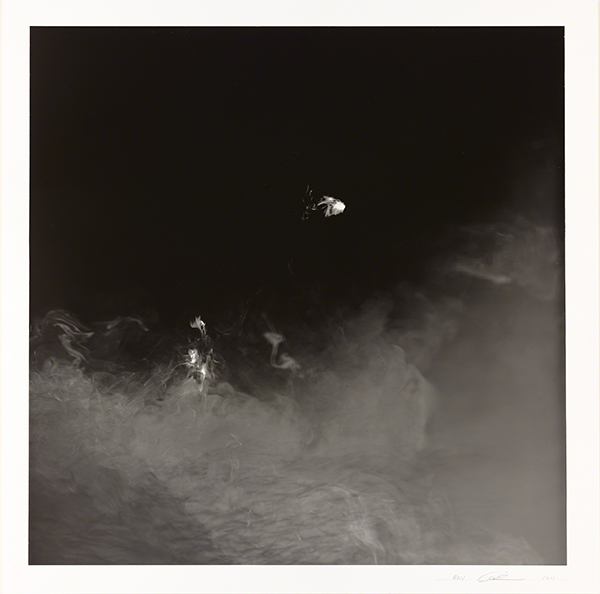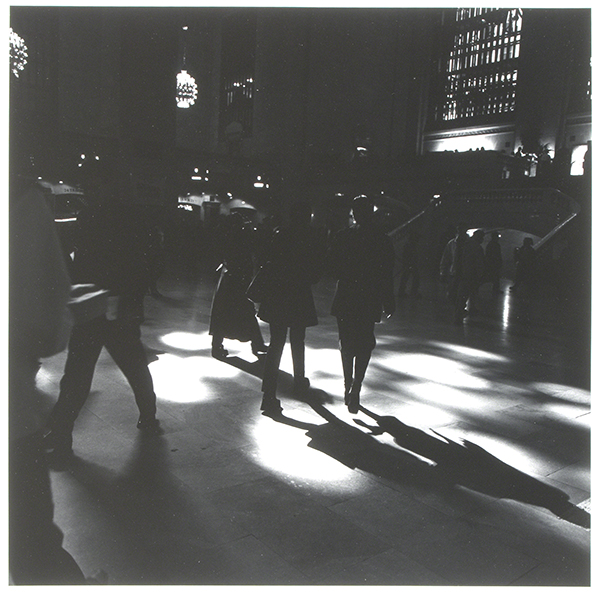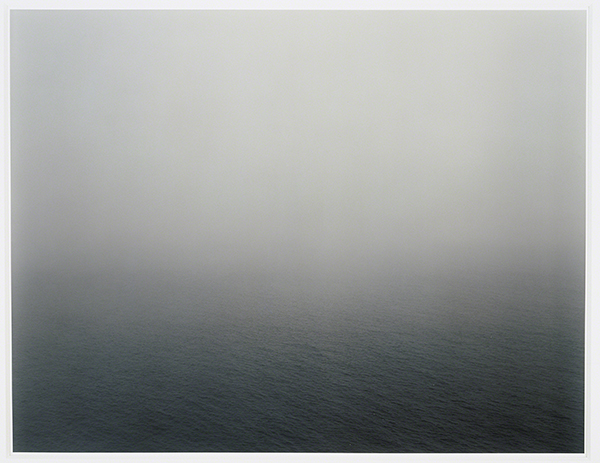The Intangible in Japanese Photography
Traditional reverence for nature—a mainstay in most Japanese art forms throughout art history—continues in the work of contemporary Japanese artists. After a couple of beautifully foggy mornings recently (where the fog settles over central Massachusetts hills), I connected the visuals of fog with traditional Japanese landscape painting, and ultimately to three contemporary Japanese photographers whose work is totally worthy of your contemplative skills.
 |
| AIHARA Gen (born 1972, Japan/U.S.), Untitled No. 021, from the series Compositions of Air, 2011. Gelatin silver print photogram on paper, 20 1/16" x 19 15/16" (51 x 50.6 cm). Courtesy of the Philadelphia Museum of Art. © 2023 Gen Aihara. (PMA-8822) |
Gen Aihara’s photographs from the Compositions of Air series are actually photograms, one of the oldest photographic processes that was pioneered by William Henry Fox Talbot (1800–1877) in his so-called “photogenic drawings.” In the process, objects are placed directly on light-sensitive paper and then exposed to light, usually sunlight. Aihara manipulates the process further by blowing, drawing, and pushing bubbles and lines of water around the paper’s surface. Although the photogram is grounded in the physical world (water), the resulting image is almost pure abstraction. Aihara has remarked that the shadows of actual physical objects—even something as amorphous as water—are proof of the object’s existence.
Born in 1972 in Hyogo, Japan, Aihara moved to New York in 1995 soon after completing his BFA at Kyoto University of Art and Design. He received his MFA from SUNY-Purchase in 1999. Aihara has worked for photographer and architect Hiroshi Sugimoto (born 1948, Japan) since 1999, traveling with Sugimoto and working as the general manager of his studio.
 |
| YOSHIDA Shigeki (born 1963, Japan), Grand Central, from the Silent City series, 2000. Gelatin silver print on paper, 14" x 14" (35.6 x 35.6 cm). Courtesy of the Philadelphia Museum of Art. © 2023 Shigeki Yoshida. (PMA-5268) |
The forms in Shigeki Yoshida's photographs incite contemplation of cultural backgrounds, whether set in New York or Tokyo. While his photographs depict the frenetic, narcissistic urban places of the world, moments of quiet clarity, in which the urban pace melts away, are emphasized. His portfolio Silent City explores these moments in early-2000s New York.
Silent City was first exhibited at the Safe-T-Gallery in Brooklyn in 2007. It was Yoshida’s first one-person show. In the best tradition of the rebel photographers of the 1960s, Yoshida hopes that his photographs, which incorporate minimalist and conceptual ideals, convey the viewer into a meditative state, focusing on light and line and leaving forms behind. This emphasis also reveals the influence of traditional Chinese and Japanese painting strategies.
In his photography, Yoshida has persisted in the belief that the camera is not merely a producer of factual documents, but rather a tool by which the artist explores things otherwise unseen. Born in Ibaraki Prefecture, Yoshida graduated from Wako University in painting in 1987. In 2002, he received a scholarship to study photography at Hunter College in New York. While studying, he came under the influence of Harry Callahan (1912–1999), famous for his straight image views of New York, particularly with dramatic contrasts of light and dark.
 |
| SUGIMOTO Hiroshi (born 1948, Japan), North Pacific Ocean, Mount Tamalpais, from the Seascapes series, 1994. Gelatin silver print on paper, 16 ½" x 21 ¼" (41.9 x 54 cm). Courtesy of the Buffalo AKG Art Museum, Buffalo, NY. © 2023 Hiroshi Sugimoto. (AK-4137) |
While conceding that commonplace environmental elements such as sea and sky are often taken for granted, Hiroshi Sugimoto suggests that there is a mystery to these elements, if for no other reason than that water and air equal the generation of life. His photographs of bodies of water are a spiritual experience, as if he is visiting an “ancestral home.”
North Pacific Ocean, Mount Tamalpais (California) is from a series of photographs Sugimoto has taken over the years to reignite a sense of wonder in aspects of nature that he feels are “invisible to our everyday consciousness” (source: Buffalo AKG Art Museum). The photographs, taken with a large-format camera, not only document the eternal balance of nature, but infer that the horizon line is the place where the physical (sea) and spiritual (air) realms meet. This is particularly evident in photographs such as this, where mist almost obscures the horizon line.
Sugimoto was born in Tokyo. He works both there and in New York. He took his earliest photographs in high school, photographing film footage of Audrey Hepburn in a movie theater. His education was an East/West blend, studying politics, economics, and sociology at Rikkyo Episcopal School and Saint Paul's University in Tokyo. After this Christian education, he studied Marxism and moved to America in 1970. In the U.S., Sugimoto decided on art as a vocation and studied photography at the Art Center College of Design in Los Angeles.
After achieving a BA in 1974, Sugimoto moved to New York, where he pursued his vocation while selling antiques in Soho. Reading the writings of André Breton (1896–1966), the "spokesperson" of Surrealism, Sugimoto developed a lifelong connection with Surrealism and the work of Marcel Duchamp (1887–1968). The main emphasis of Sugimoto’s work is the idea that photography is a way of preserving memory and time.
Westerners brought photography to Japan after the 1850s, once the country was opened by Western powers for trade. By the early 1900s, there were many established native Japanese photography studios. Photography was also enjoyed as a hobby. However, photography never quite rivaled the popularity or status of printmaking and painting in Japan. During World War II (1939–1945), there was a surge in the vitality of photojournalism. After the war, there was a new energy among Japanese artists as they reacted to the modernization and Westernization of their country.
Between the 1950s and mid-1960s, most Japanese photography centered around a reassertion of Japanese identity in light of defeat in war and Allied occupation. This was explored in images that documented ironic, ongoing cultural traditions and the search for a place in the rapid-paced, modern Western world. The post-war economic boom in Japan created a Western-influenced consumerist culture in which good cameras became affordable to amateur and professional photographers alike.
During the late 1960s, numerous young, progressive photographers sought to use photography as a means of modern self-expression rather than social introspection. The publication of Provoke magazine (“Incendiary Documentation for New Thinking”) in 1968 and 1969; the student riots of those years against the Western influence of materialism; and the Konpora group’s quiet rebellion against traditional Japanese photographic methodology all had a major impact on the direction of modern Japanese photography. Japanese artists decided that the eye behind the lens was more important than what the lens saw.
Correlations to Davis programs: Experience Art: 2.1, The Visual Experience 4E: 5.8; Focus on Photography 2E: p. 279, pp. 290–291


Comments